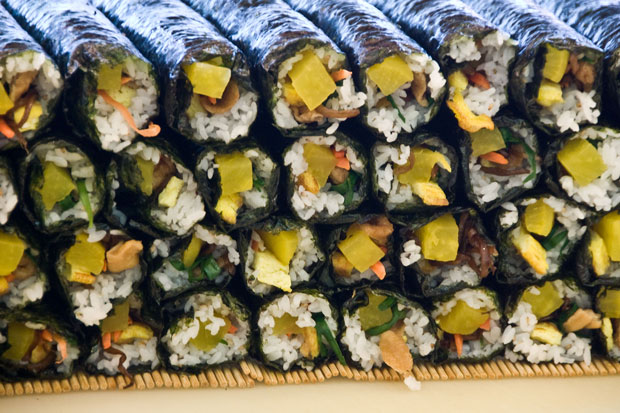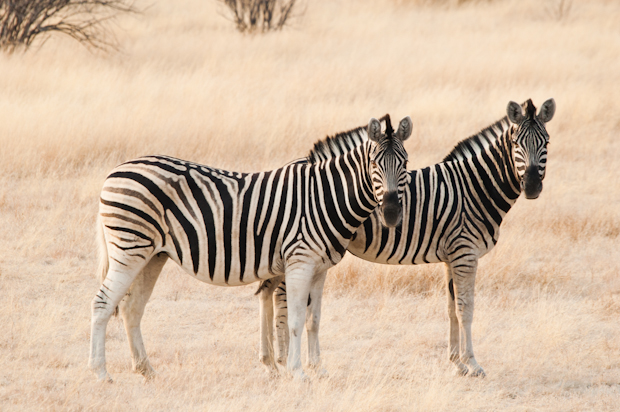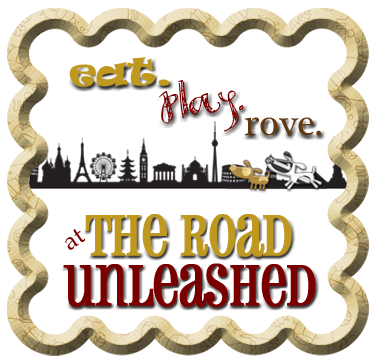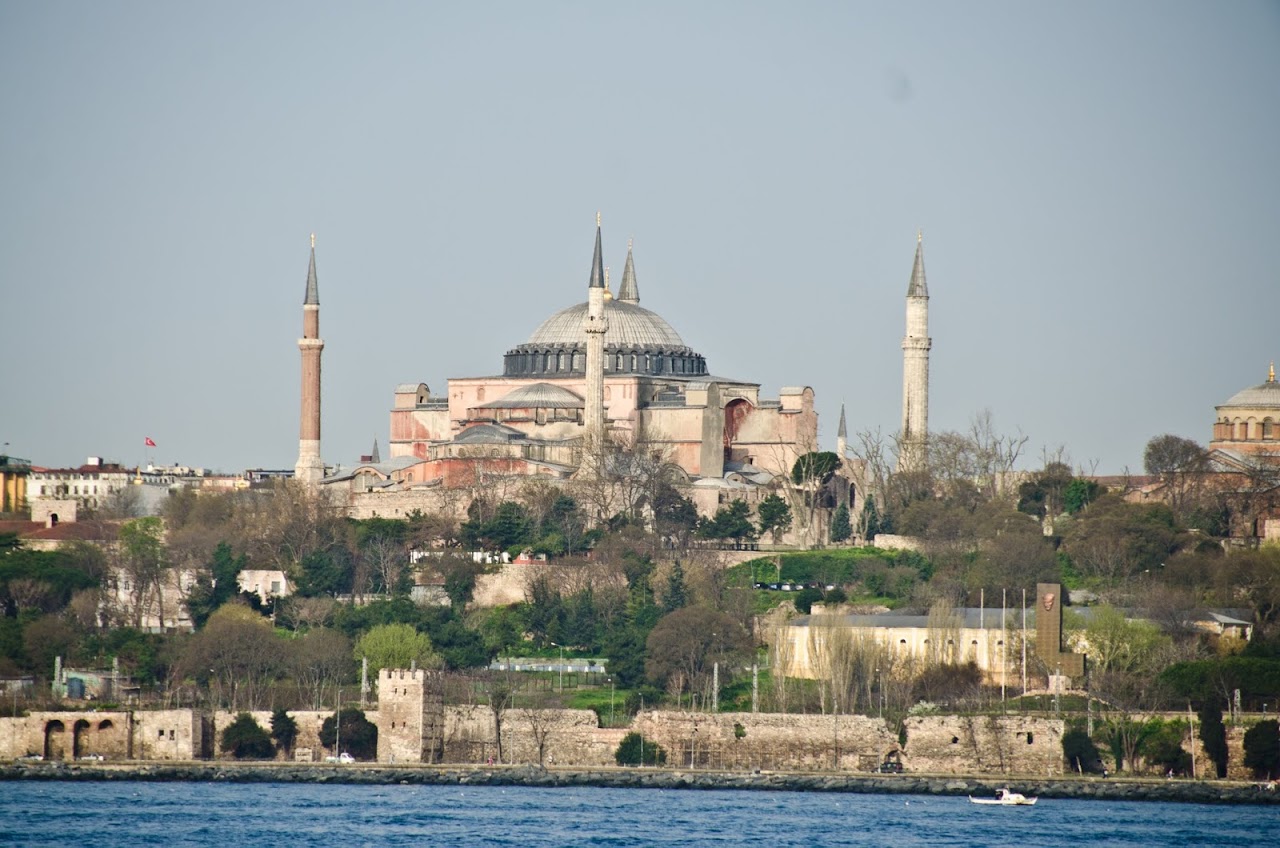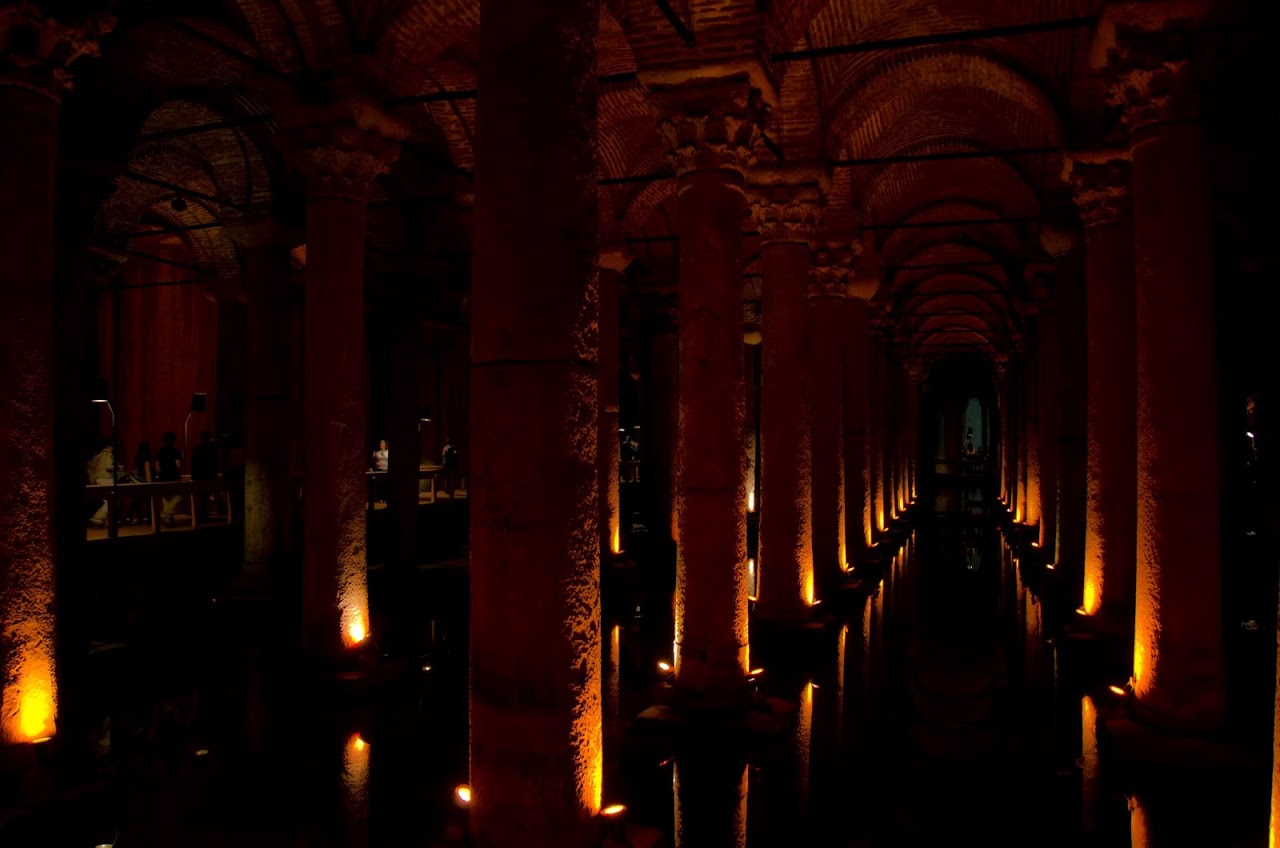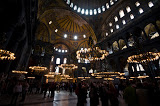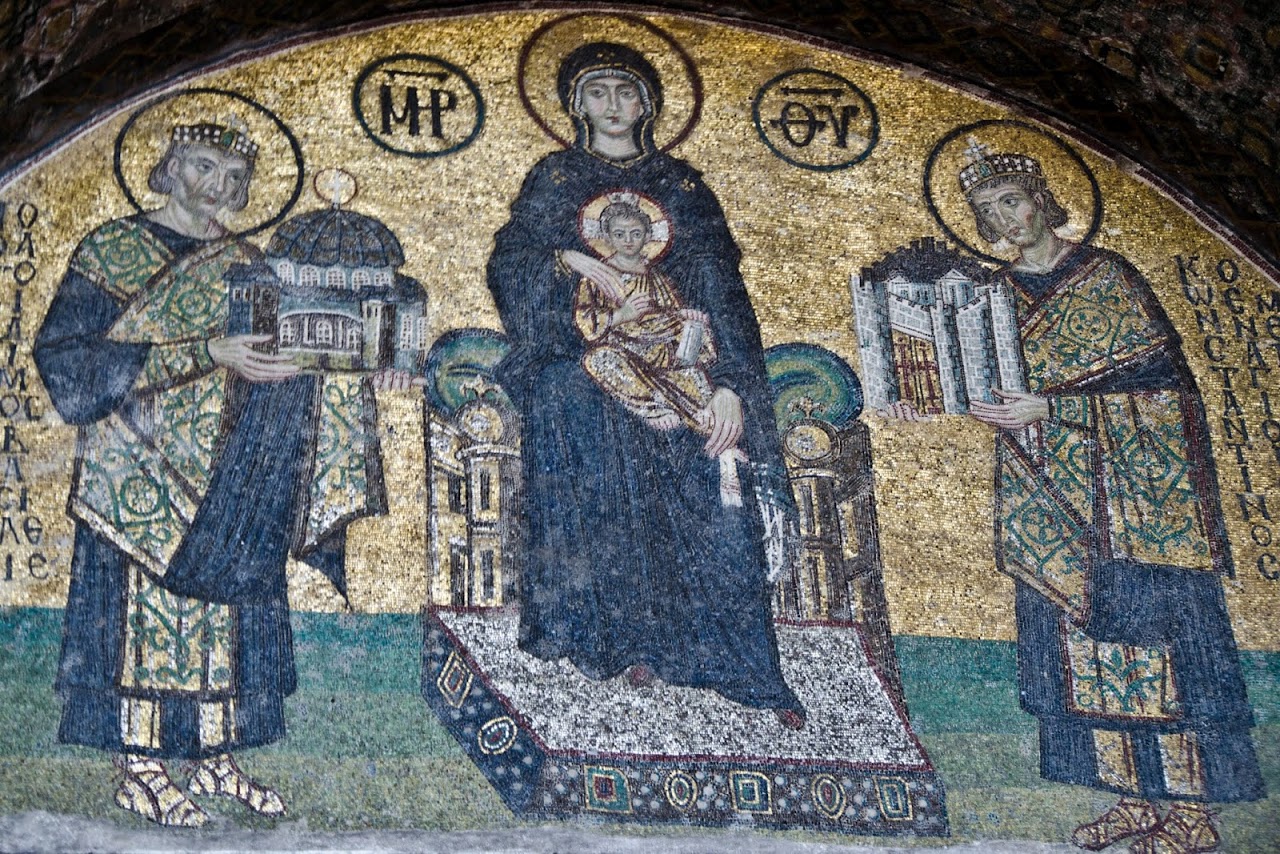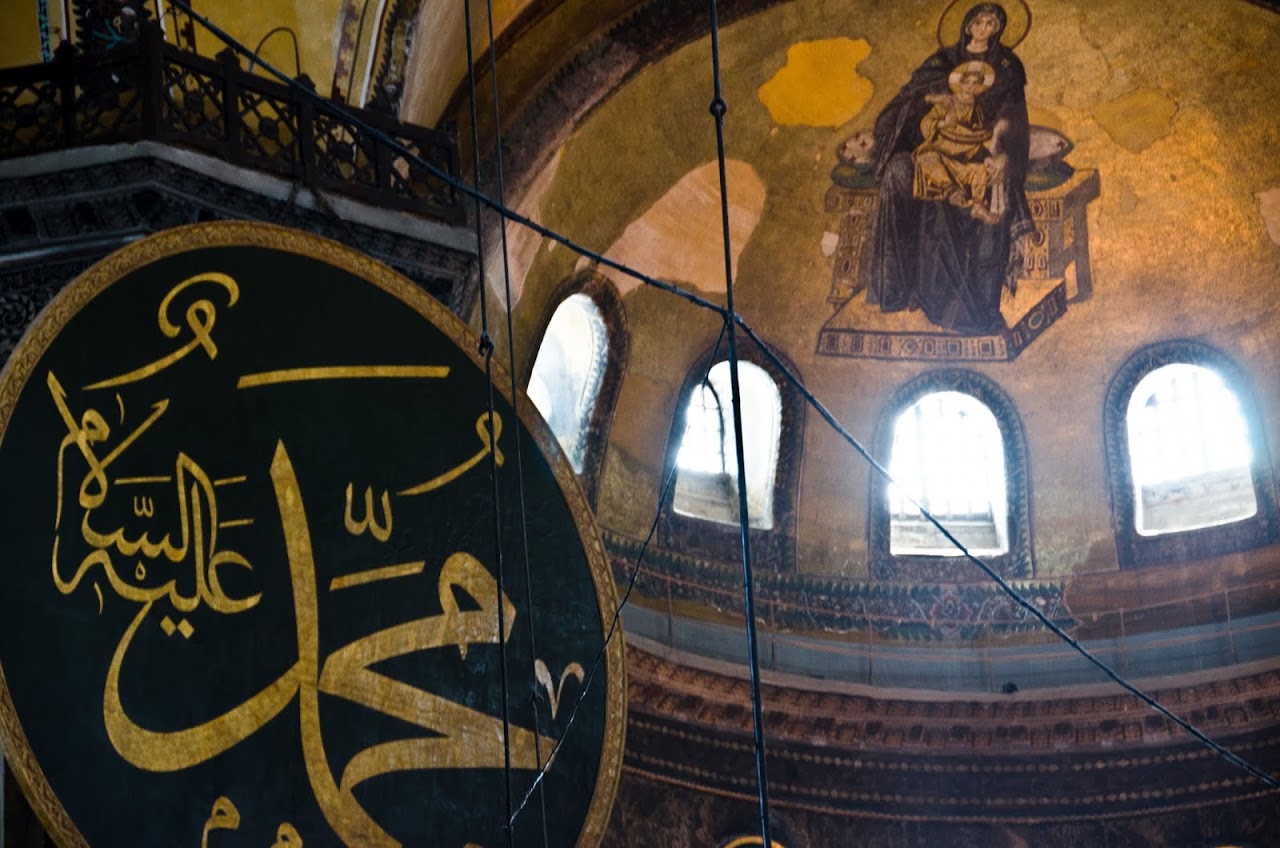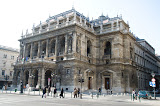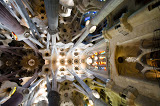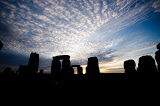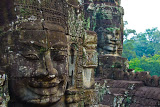Hagia Sophia from the water
We spent March in rural Bulgaria, living amongst sheepherders and vineyard workers. We went weeks without speaking English and finding western cuisine. The largest building in our village was the three stories high library and school. We sped past donkey carts and Communist era automobiles and pushed our four wheel drive to its limit on what the Bulgarians claim are "roads." (More on Bulgaria later.)
And, then, in early April, we drove into Istanbul.
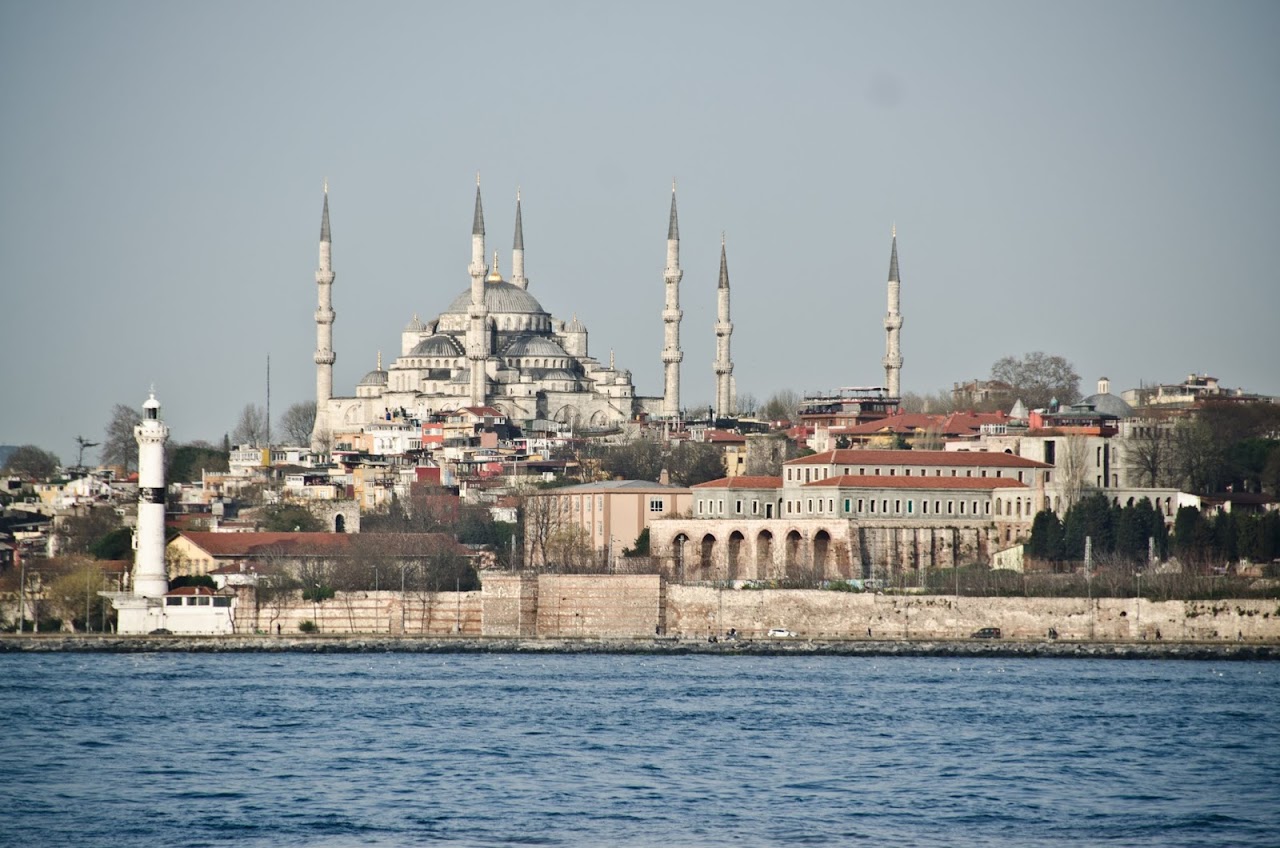
|
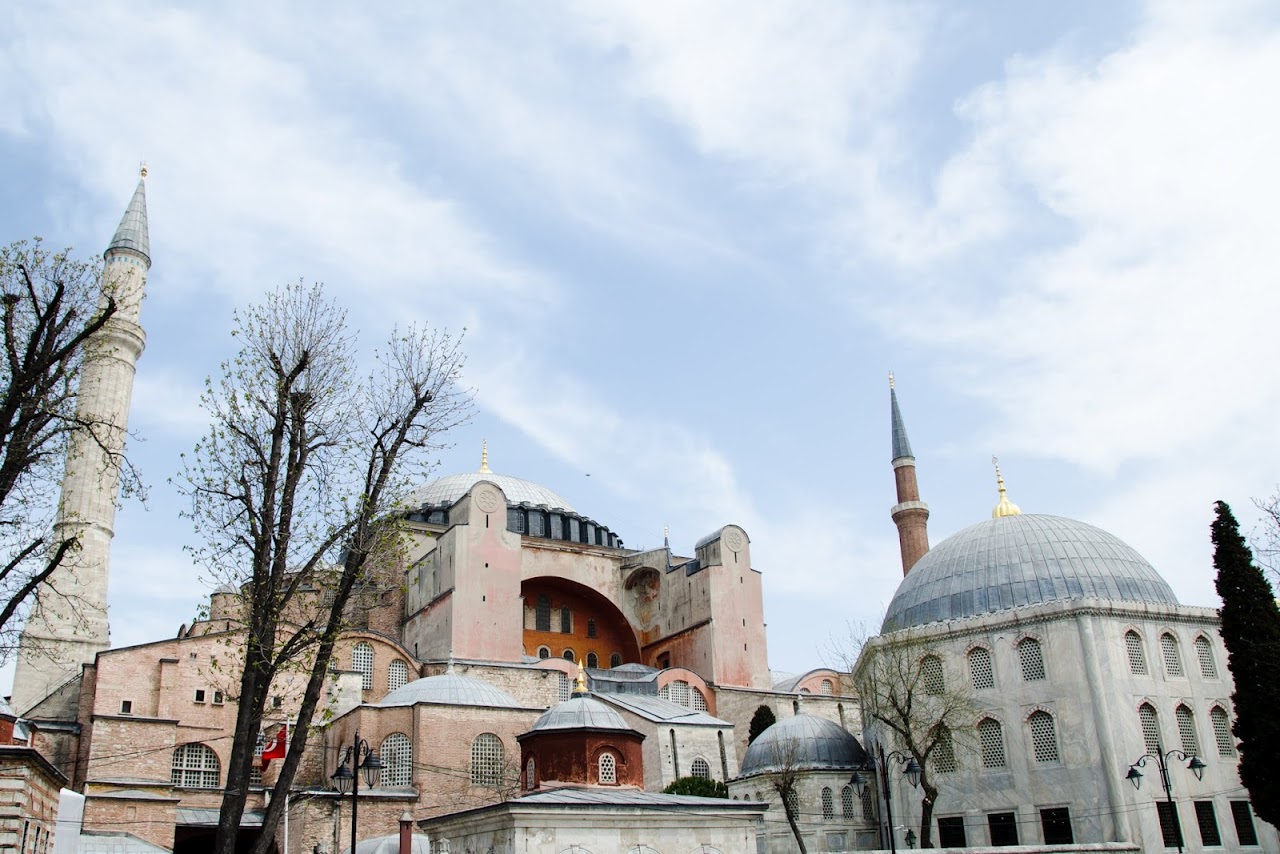
|
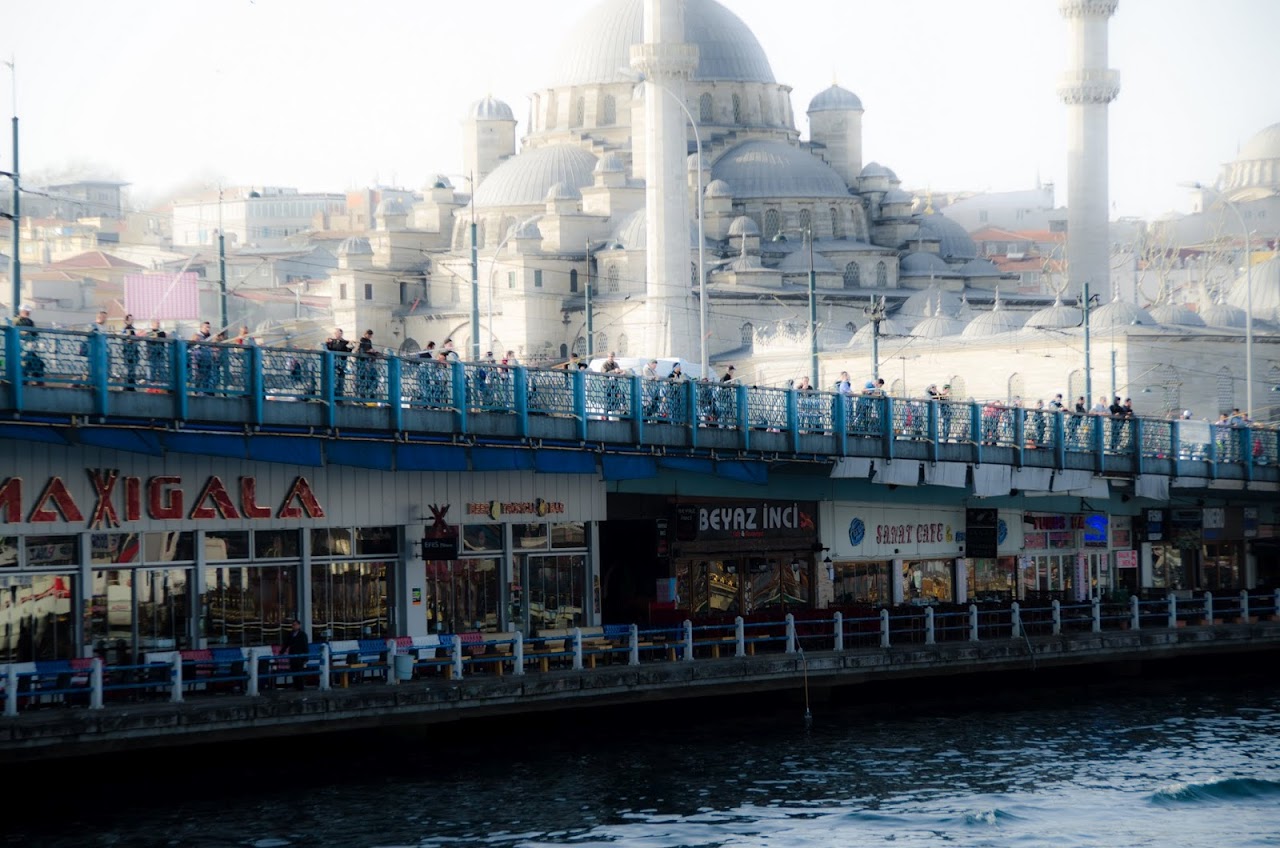
|
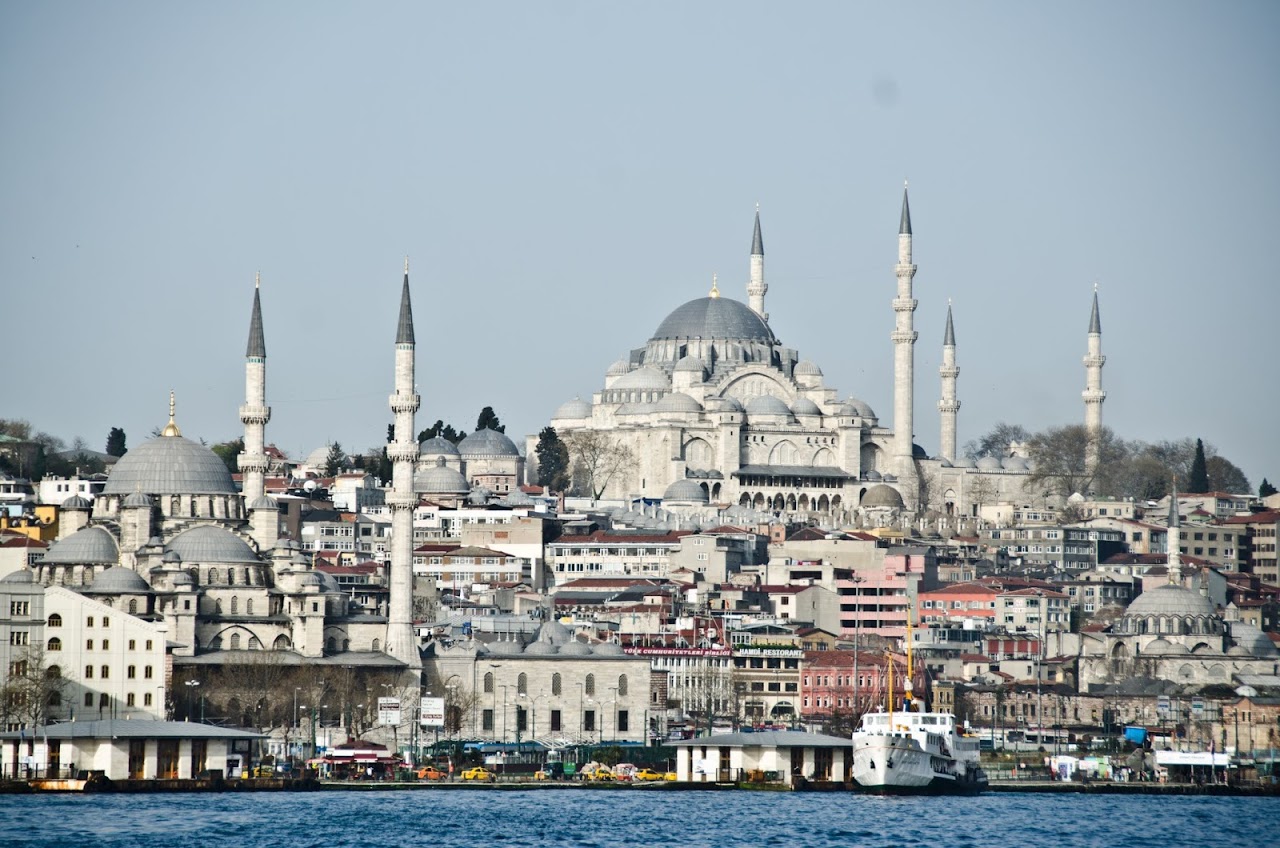
|
Blue Mosque, Hagia Sophia up close, Sulemaniye Mosque, and Blue Mosque surrounded by Sultanahmet
Istanbul is dramatic. The rounded roofs and pointed minarets of Hagia Sophia, the Blue Mosque, and the Sulemaniye Mosque dominate the skyline of the historic center. From afar, Hagia Sophia is the least impressive of these buildings --- faded brick with none of the blue and silver elegance of the Blue Mosque or the Sulemaniye Mosque --- and we wondered why Ceylan Zere, the city manager of Context Istanbul , insisted that we visit Hagia Sophia early on our trip. But, we followed her advice and, on our second day in Istanbul, we took Context's Hagia Sophia Seminar (priced at 125 TRY or about $67.50 USD).
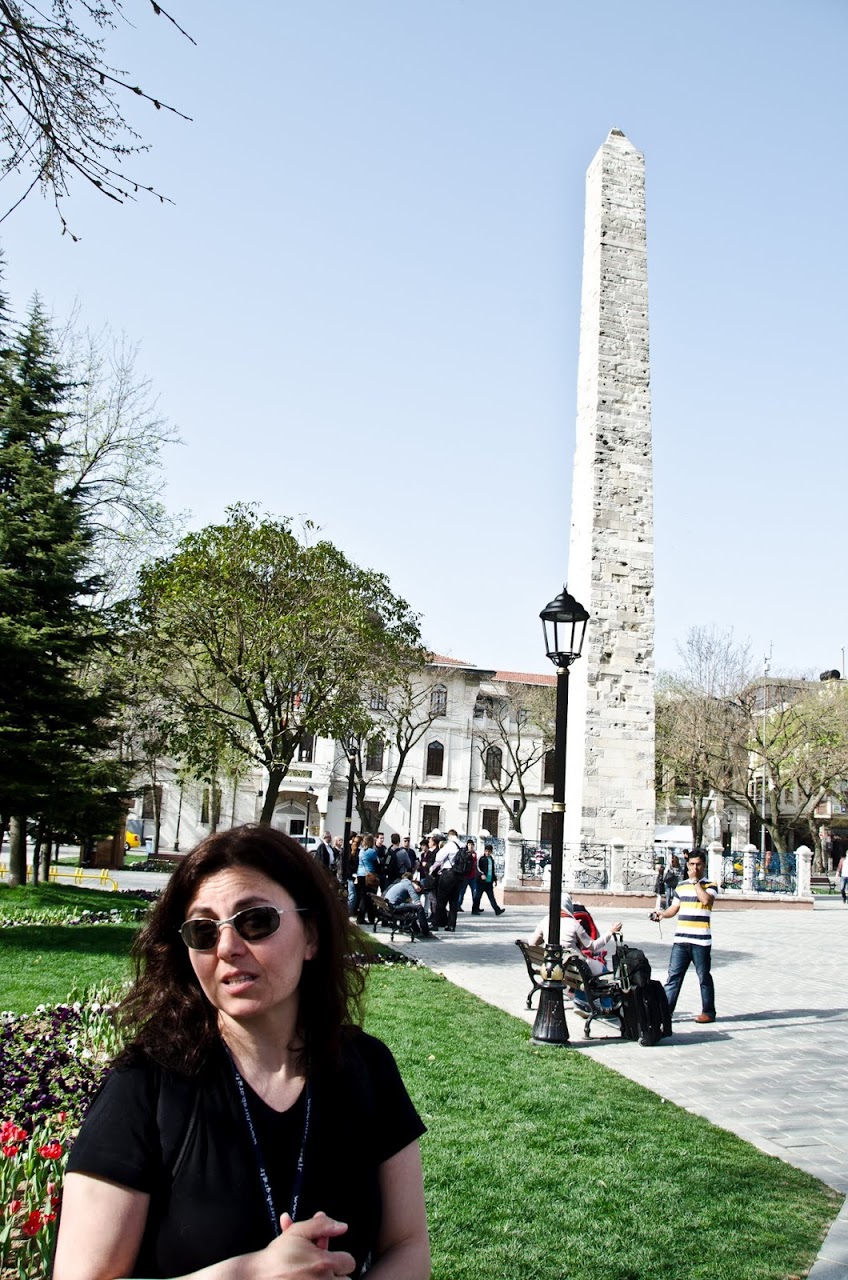
|
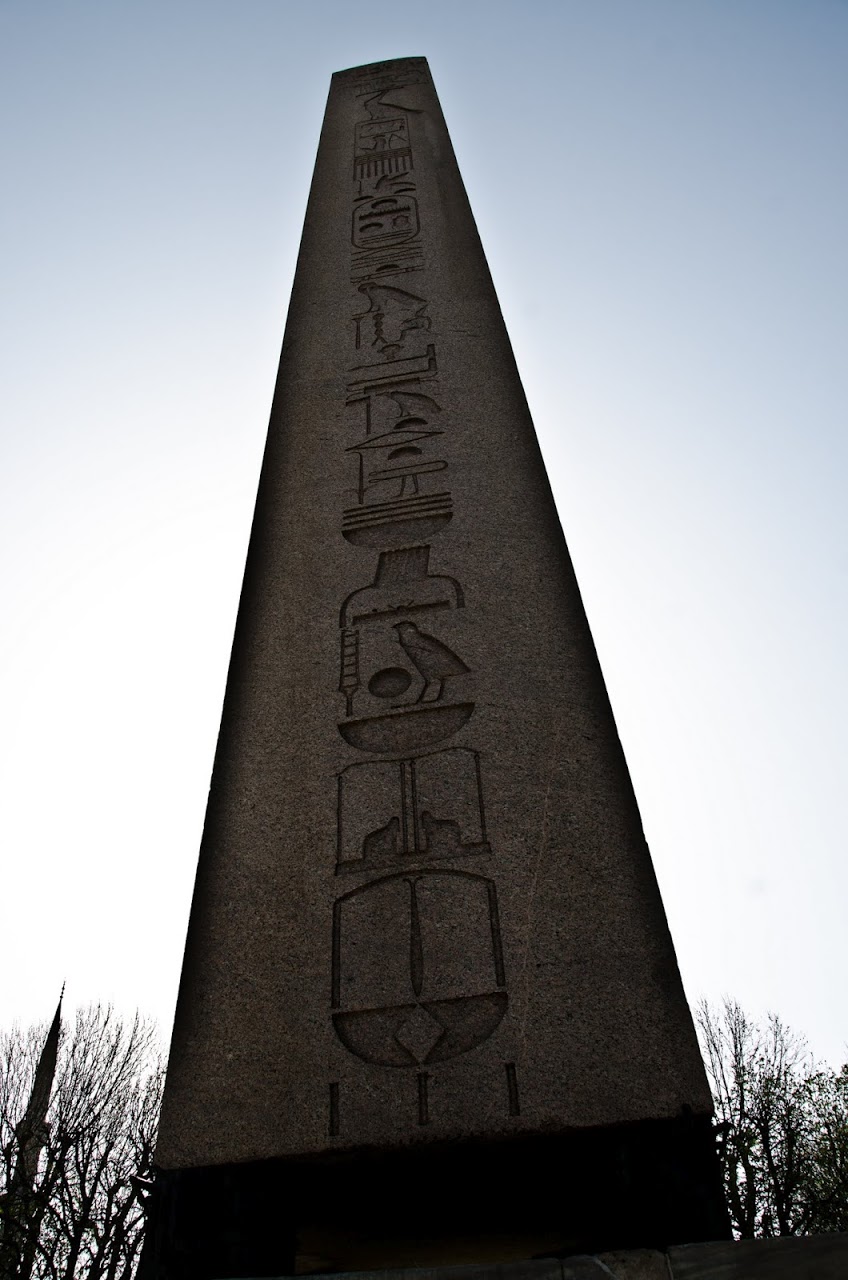
|
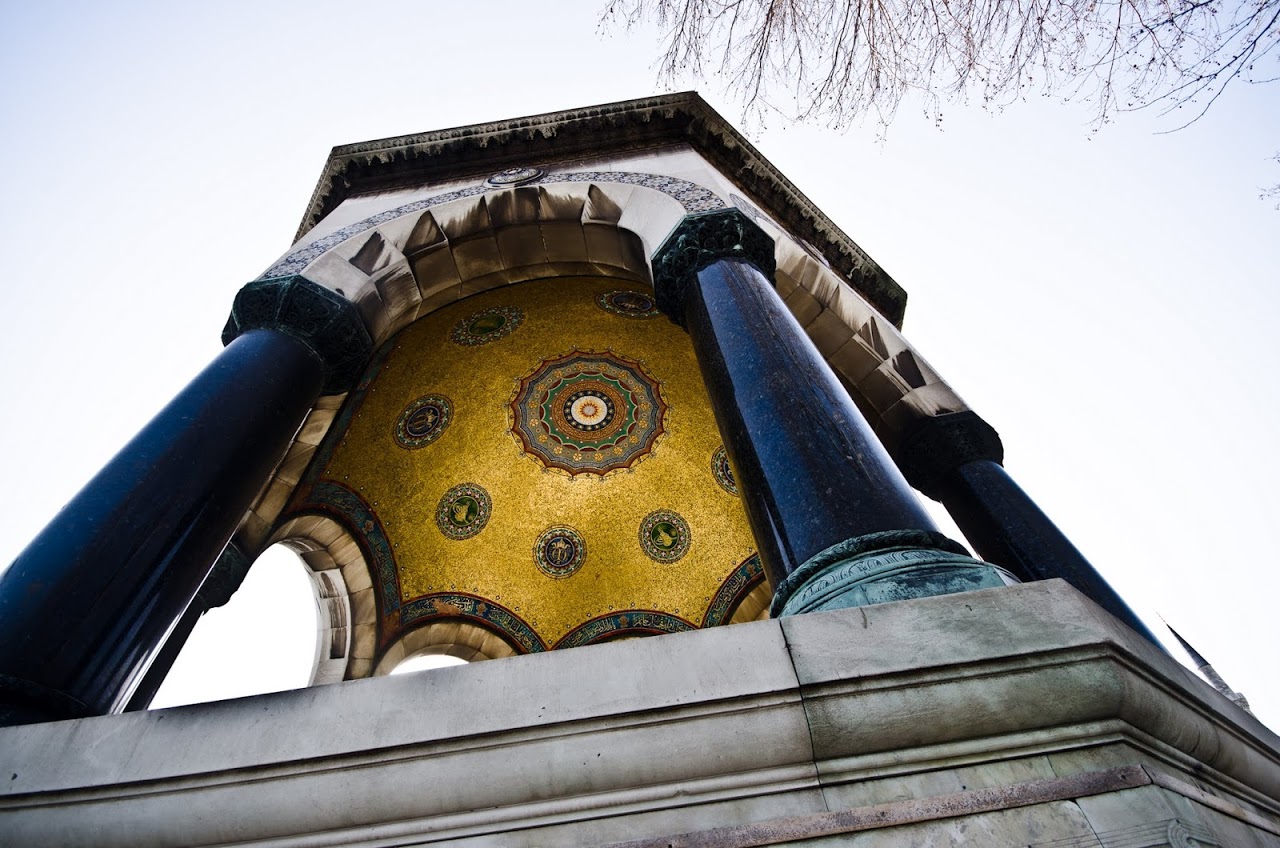
|
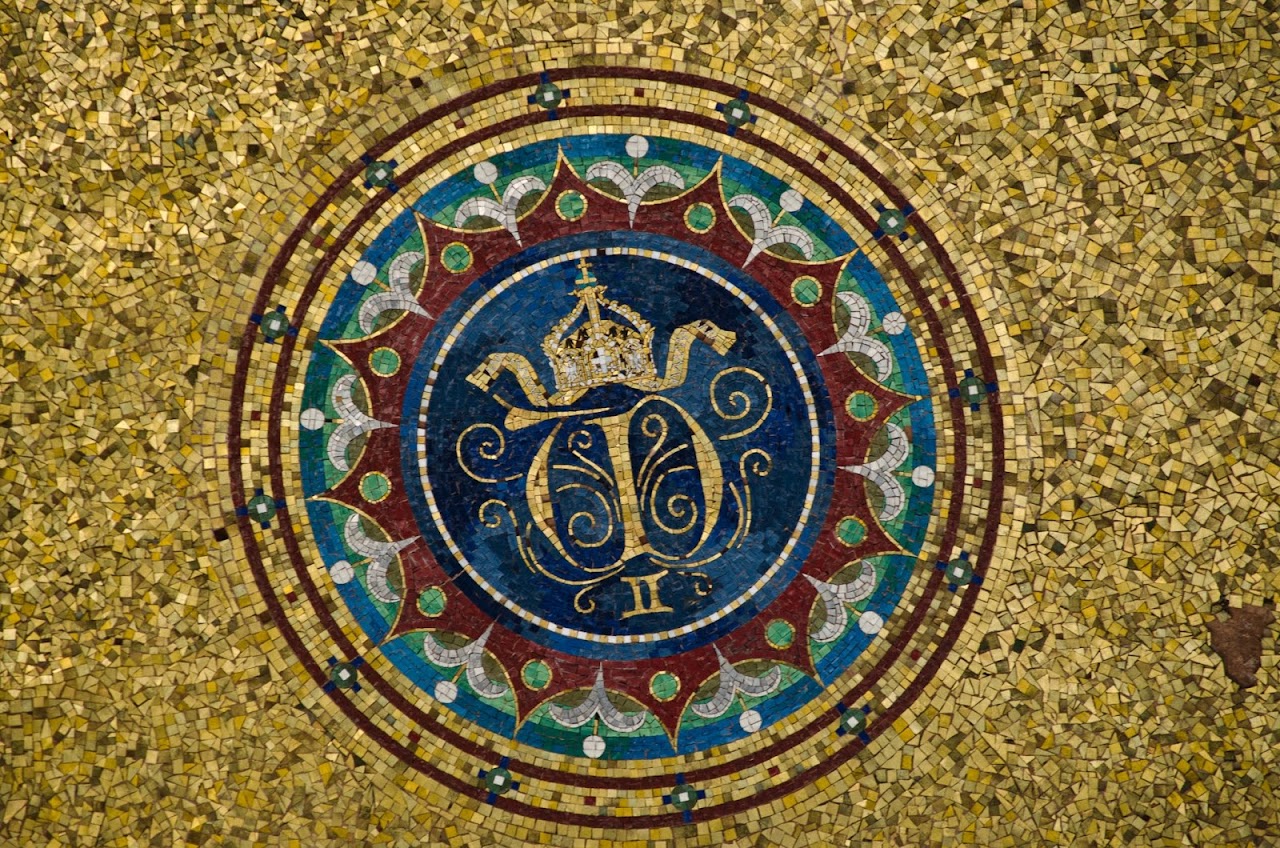
|
Ebru Gokteke, our guide, and the obelisks and German fountain at the Hippodrome
Ebru Gokteke, our docent, explained that Sultanahmet --- the main tourist center of Istanbul and home to Topkapi Palace, the Blue Mosque, and Hagia Sophia --- is essentially one giant history museum. It was here in Sultanahmet that the remains of 34 shipwrecks were found from the 1st century B.C. and a Neolithic settlement, as well. Mythically, this site has great importance because it is believed that the Oracle of Delphi told Greek settlers that they must live "across from the City of the Blind." They arrived in modern-day Sultanahmet and realized that all of the Neolithic settlers were living on the modern-day Asian side of Istanbul, though the European side had better vantage points and resources for water. Thus, they settled in the European side of Istanbul across from those who were too blind to see what the European side offered.
Basilica Cisterns
In 330 A.D., Constantine conquered Byzantium and Constantinopolis became the new capital of the Eastern Roman Empire. The Roman penchant for building big, BIG, and BIGGER things included the monumental obelisk at the Hippodrome in Istanbul which could seat 40,000 people for the chariot races, and the eerie Basilica Cistern that had the capacity to store about 100,000 tons of water --- enough drinking water to supply the entire city during a siege.
Hagia Sophia
But, their triumph was Hagia Sophia. One of man's greatest architectural achievements, the Emperor Justinian built the Hagia Sophia to create a cathedral that would match the ancient Solomon's famous cathedral in 537 A.D. When it was built, the Hagia Sophia was the largest building in the world and, even today, it is the 4th largest church building in the world.
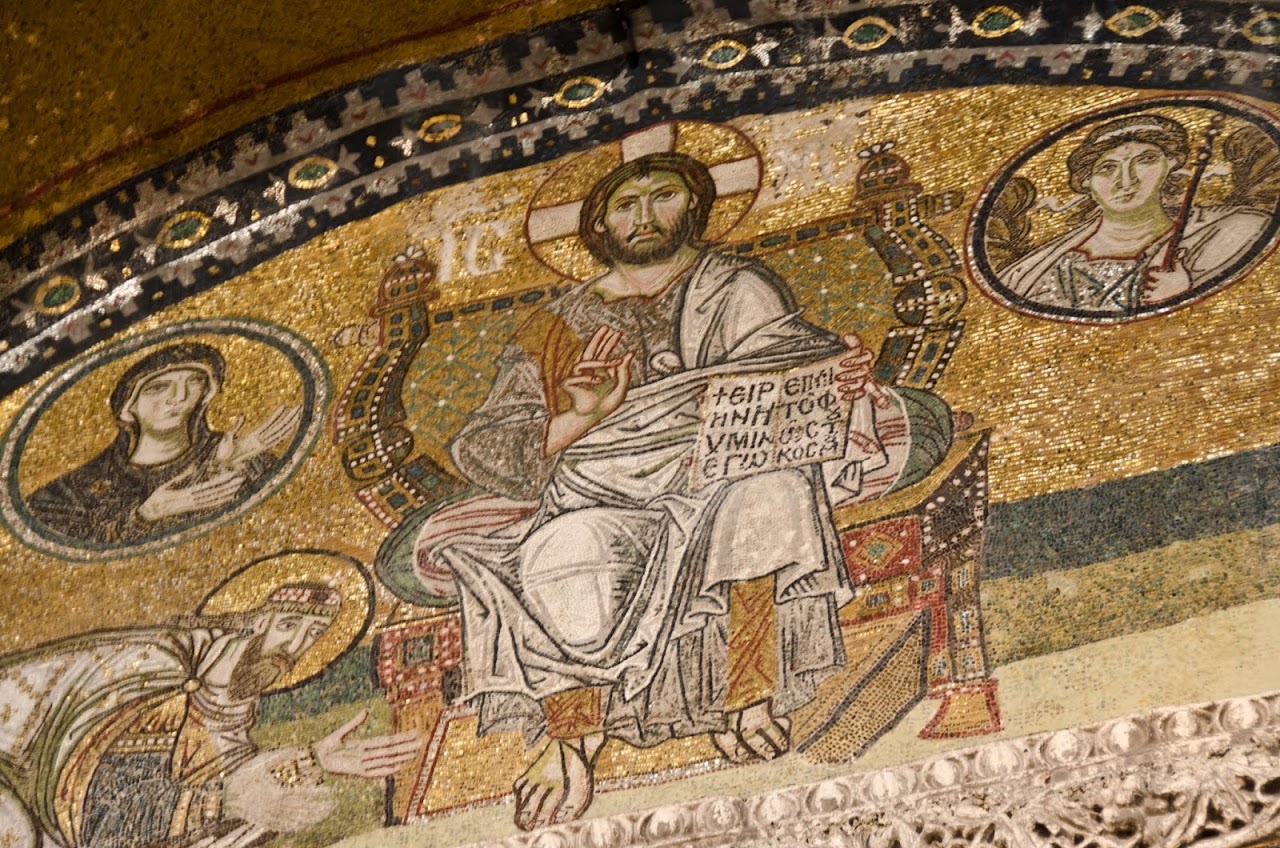
|
|
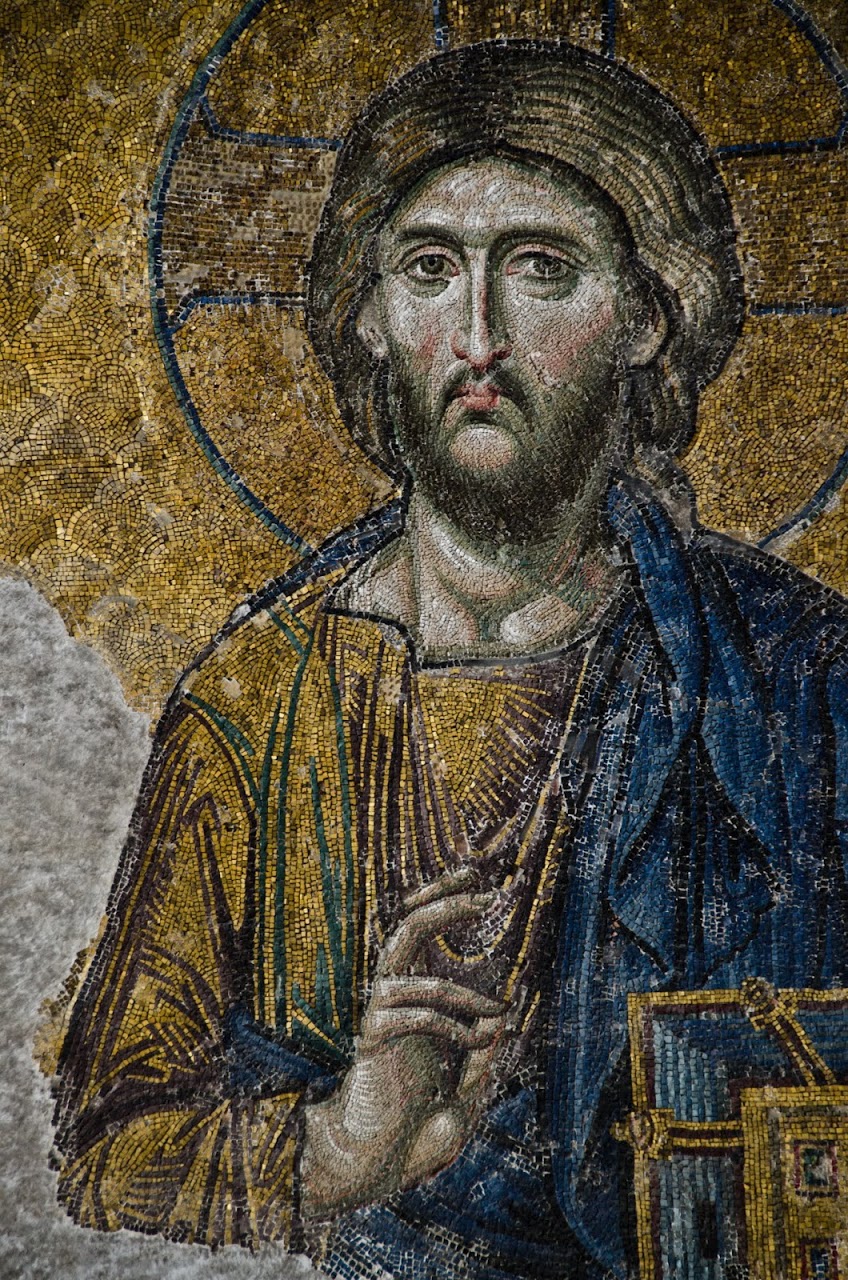
|
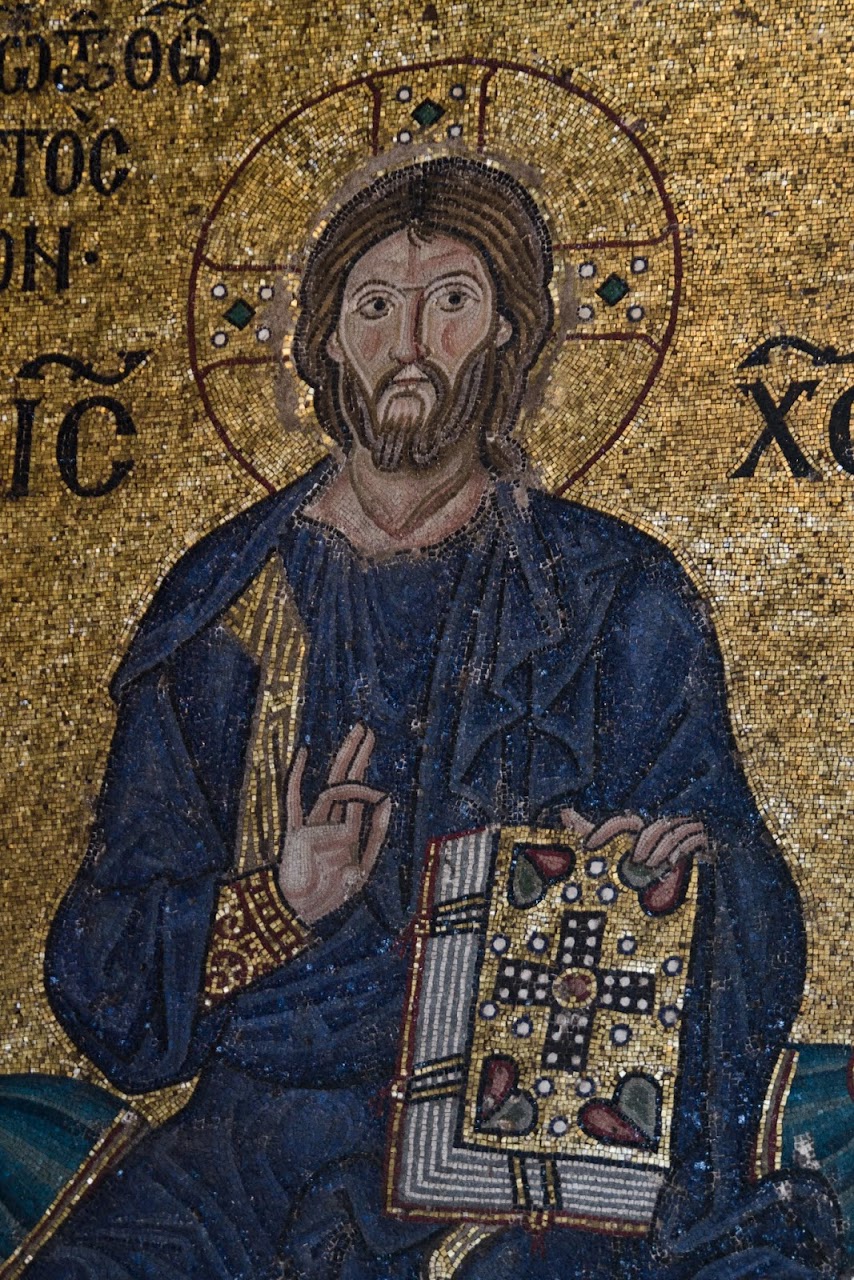
|
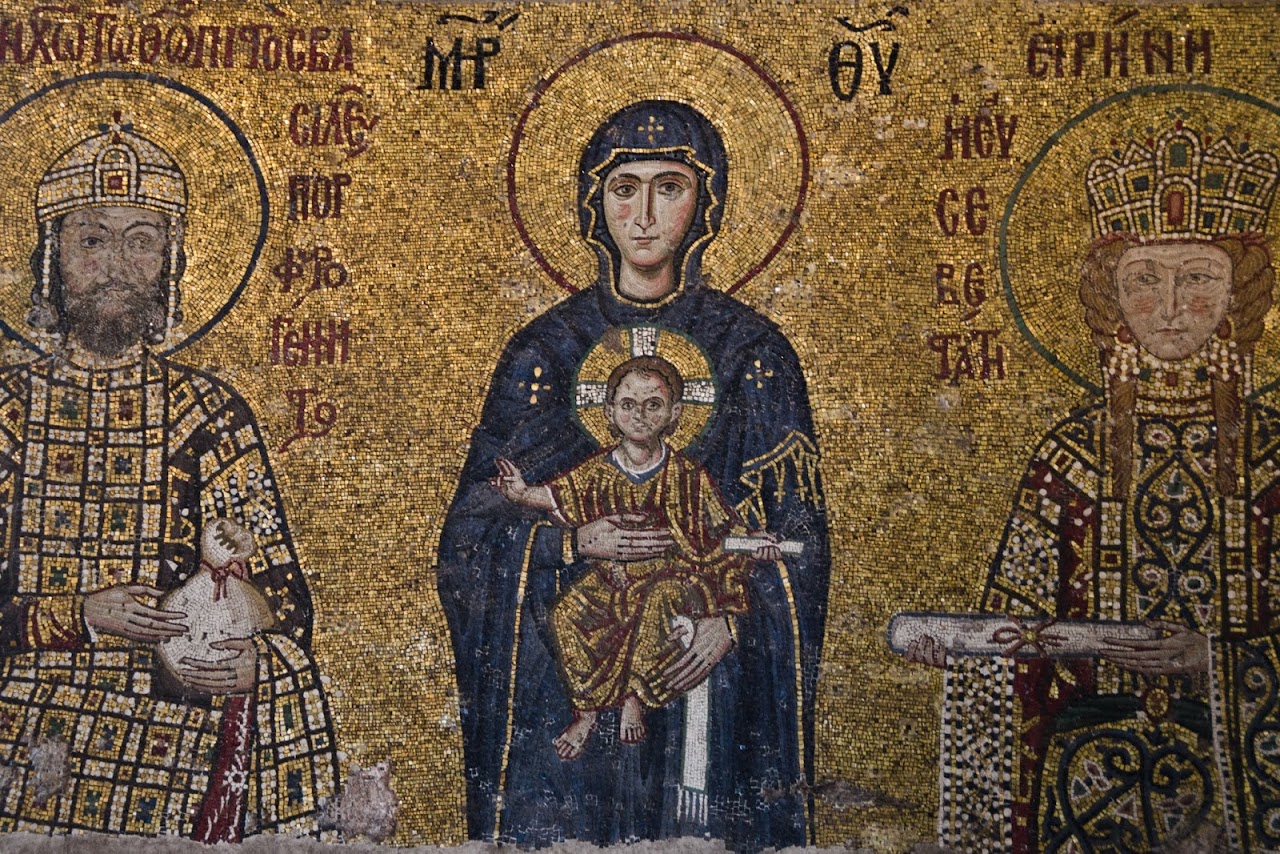
|
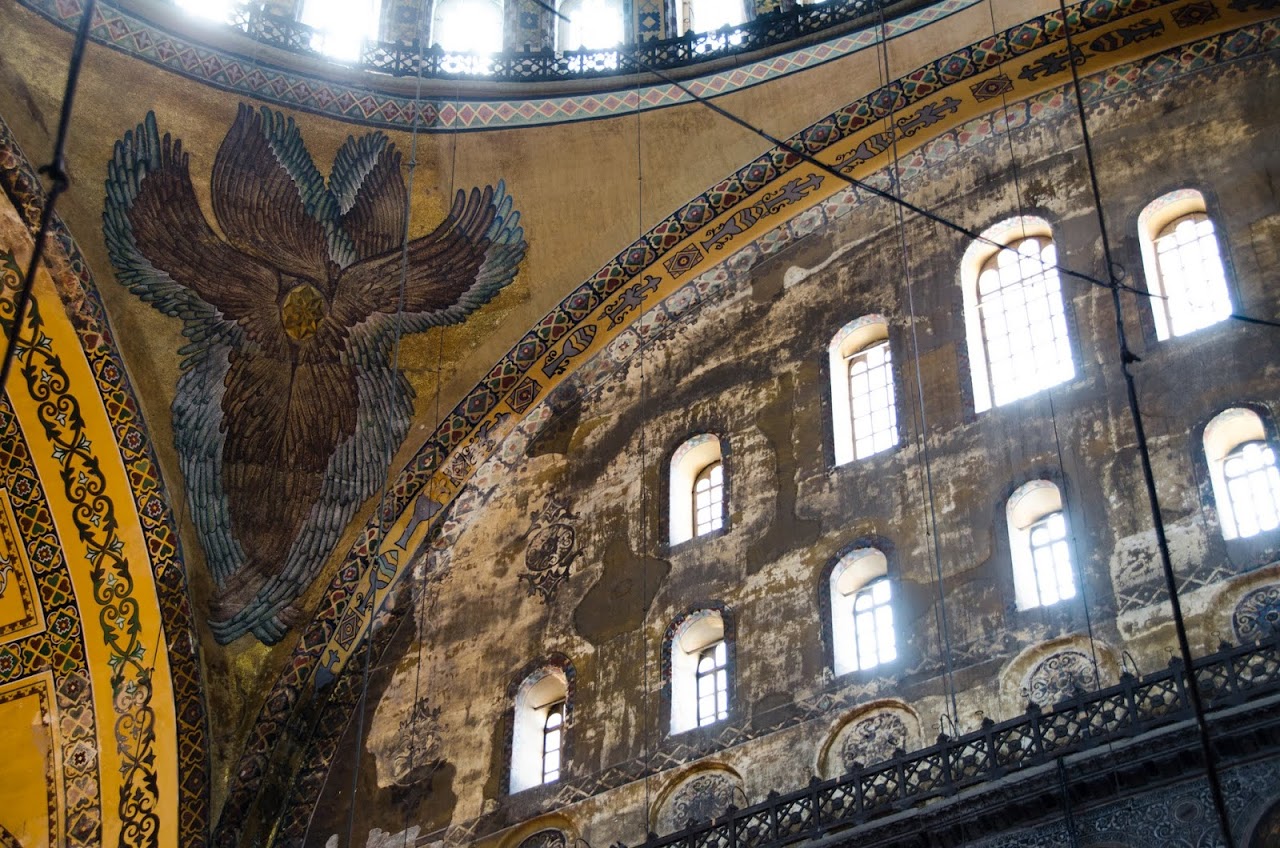
|
Hagia Sophia mosaics
Hagia Sophia was built in the style of a Greek orthodox church with a portrait of Jesus at the center o the ceiling and angels in the four corners. Beautiful golden mosaics depicting Christ and the Virgin Mary . . . though there is also one very freaky picture of the baby Jesus where he looks almost exactly like Chuckie (or maybe it's the other way around.)
Islamic and Christian emblems at Hagia Sophia
Hagia Sophia became the golden standard for religious worship and, when the Turks and Islam took control of Istanbul in the 15th century, they converted Hagia Sophia into use for Islamic services. The early Ottoman emperors revered the architecture of Hagia Sophia so much that originally they only covered the Christian iconography with drapes, but, later emperors covered the murals with plaster.
But, if imitation is the highest form of flattery, then the Ottomans could give the Romans no better praise than what followed: Hagia Sophia served as the architecture model for most of the other famous mosques in Istanbul, including the Blue Mosque and the Sulemaniye Mosque.
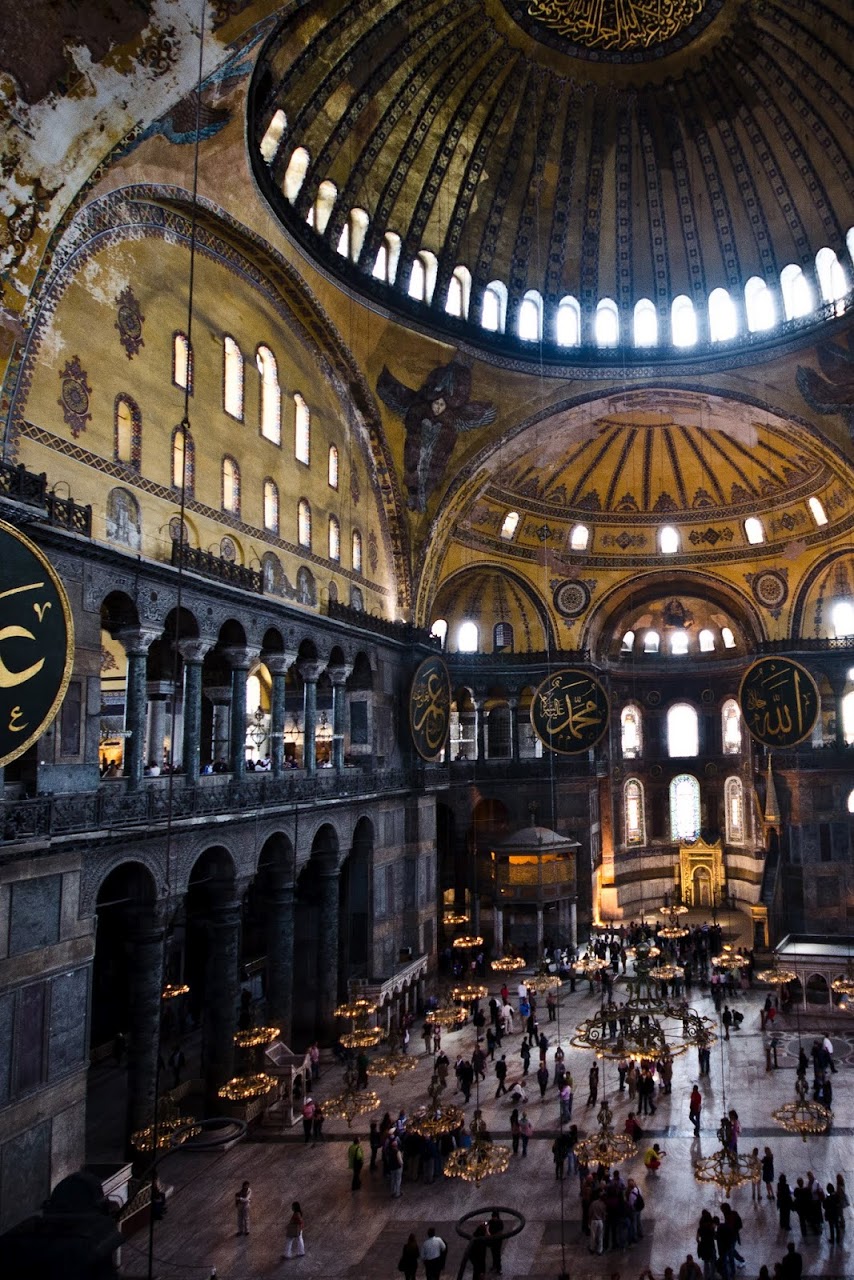
|
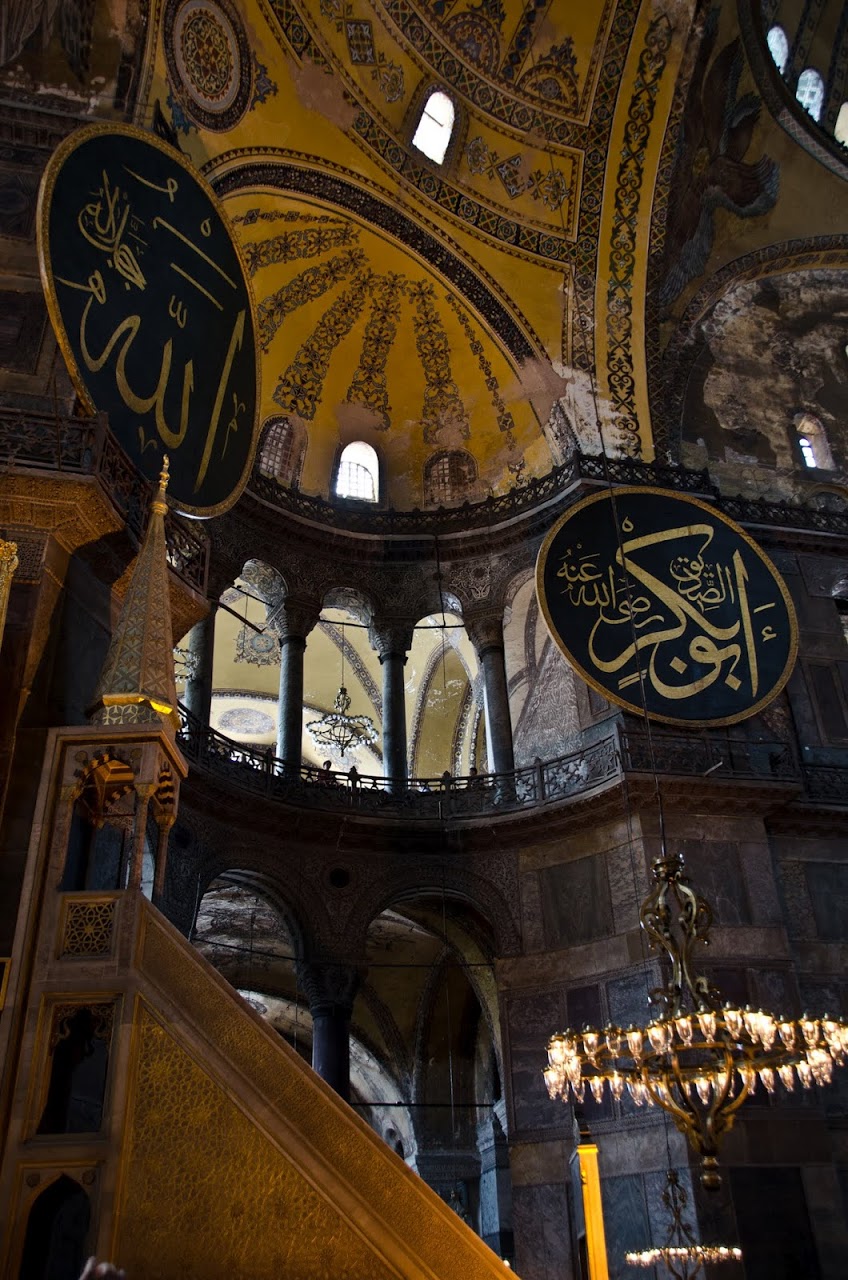
|
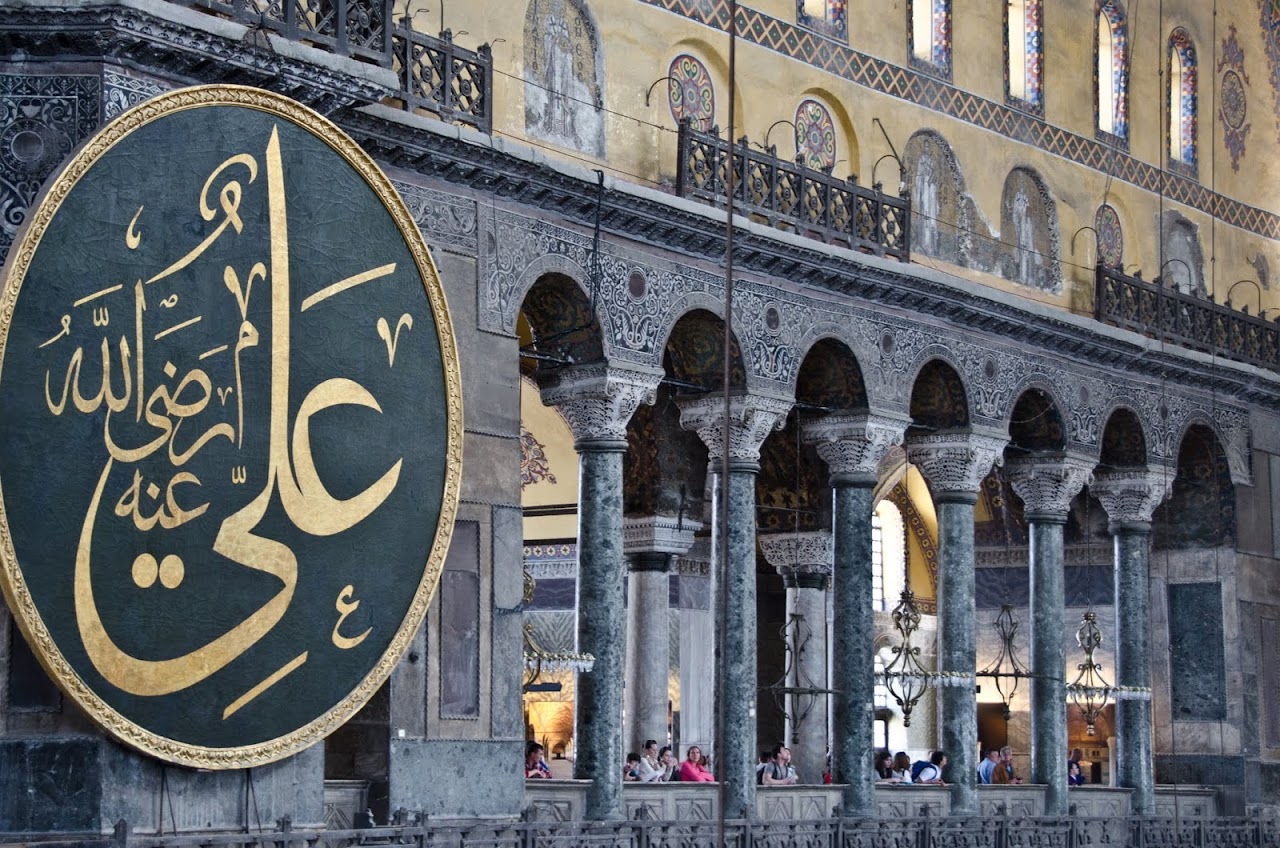
|
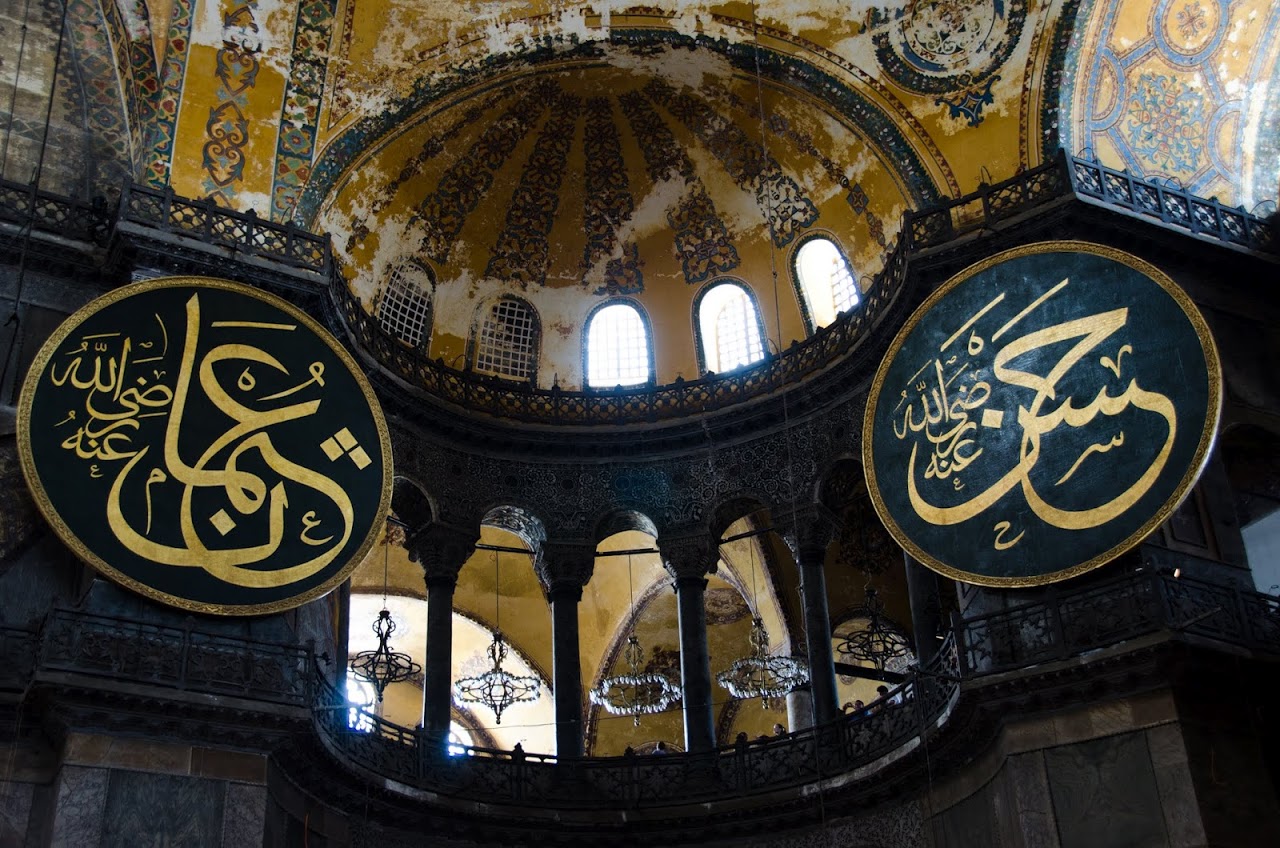
|
Interior of Hagia Sophia
In 1943, the Republic of Turkey converted Hagia Sophia into a museum and worked to uncover many of the Christian symbols, while retaining the Islamic iconography added to the structure. Now, the building is part Christia and part Islamic, but wholly humbling in a beauty that transcends cultural and religious differences.
Details
Ebru's tour through Hagia Sophia was one of our favorite Context walks in Istanbul because she brought the history of Istanbul alive and helped tell a story of a multi-cultural, multi-religious Istanbul that defined the rest of our stay in the city. I highly recommend this tour to start off a few days' stay in Istanbul because she also helped explain a lot of the Islamic iconography that we saw when we visited other mosques in the city.




